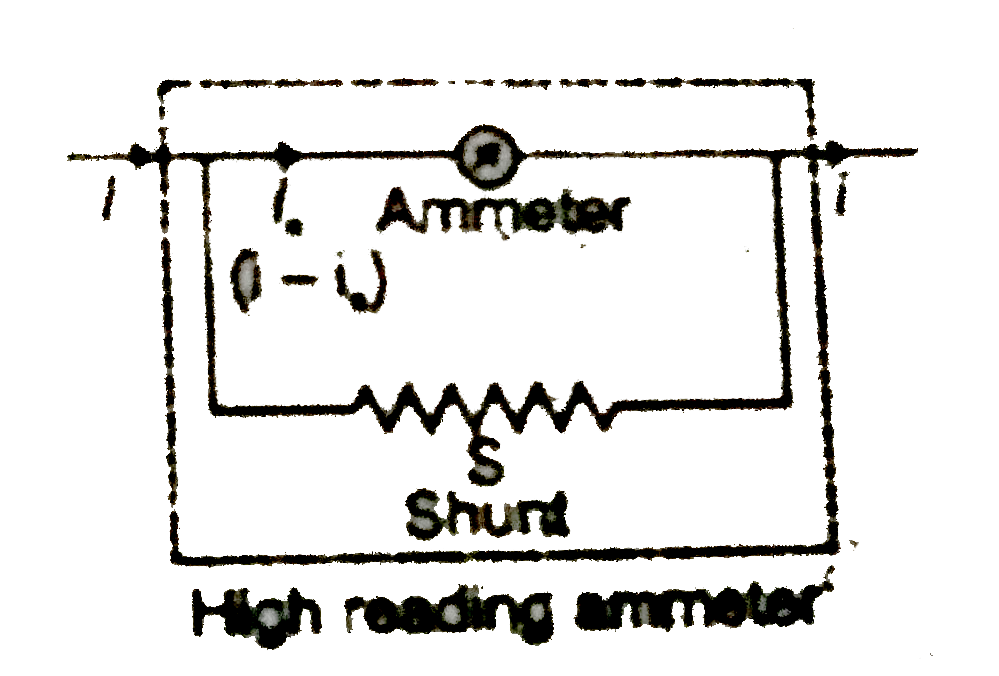The resistance of an ammeter is 13Ω and its scale is graduated for a current upto 100A. After an additional shunt has been connected to this ammeter it becomes possible to measure currents upto 750A by this meter. The value of shunt resistance is
20Ω
2Ω
0.2Ω
2kΩ
The correct Answer is:B
The potential difference across ammeter and shunt is same.
Let ia is the current flowing through ammeter and I is the total current. So, a current i−ia will flow through shunt resistance
ie. ia×R=(i−ia)×S
or S=iaRi−ia.....(i)
Given, S=100×13750−100=2Ω

Topper's Solved these Questions
Similar Questions
An ammeter of resistance 0.80Ω can measure current upto 1.0 A. What must be the value of shunt resistance to enable the ammeter to measure current upto 5.0 A ? What is the combined resistance of the ammeter and the shunt?
View SolutionAn ammeter of resistance 0.6Ω can measure current upto 1.0 A. Calculate (i) The shunt resistance required to enable the ammeter to measure current upto 5.0 A (ii) The combined resistance of the ammeter and the shunt.
View Solution
Knowledge Check
The resistance of an ammeter is 13Ω and its scale is graduated for a current upto 100A. After an additional shunt has been connected to this ammeter it becomes possible to measure currents upto 750A by this meter. The value of shunt resistance is
A20ΩB2ΩC0.2ΩD2kΩAn ammeter of resistance 1.5 Ω can measure currents upto 1 A. The value of shunt resistance to measure current upto 4 A is
A0.5ΩB1ΩC1.5ΩD0.2ΩThe resistance of a galvanometer is 100Ω. A shunt of 5Ω is connected to it to convert it into an ammeter. The internal resistance of the ammeter is
A5.2ΩB4.8ΩC4.6ΩD4.2Ω
An ammeter of resistance 0⋅80Ω can measure current upto 1⋅0A.
(a) What must be the value of shunt resistance to enable the ammeter to measure current upto 5⋅0A?
(b) What is the combined resistance of the ammeter and the shunt?
View SolutionA galvanometer with its coil resistance 25Ω requires a current of 1 mA for its full deflection. In order to construct an ammeter to read up to a current of 2A, the approximate value of the shunt resistance should be :
View SolutionAn ammeter of resistance R gives a full scale deflection when a current of 30 A is passed through it. We eant to convert it into an ammeter to measure the current only upto 10A. The value of the shunt required for this is
View SolutionA galvanometer having a resistance of 75Ω gives the full scale deflection for the current of 25mA. The shunt required to convert it into an ammeter to measure the current up to 59 A is
View SolutionA galvanometer of resistance 15Ω gives full scale deflection for a current of 2mA. Calculate the shunt resistance needed to convert it into an ammeter of range 0 to 5A.
View Solution
